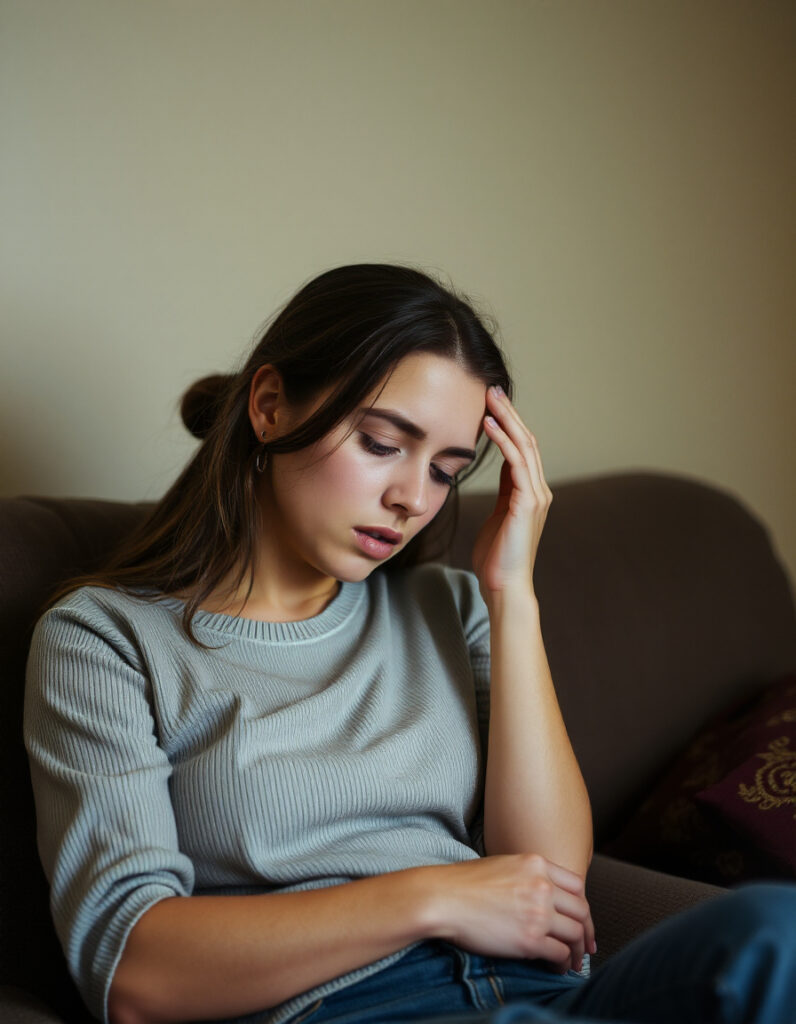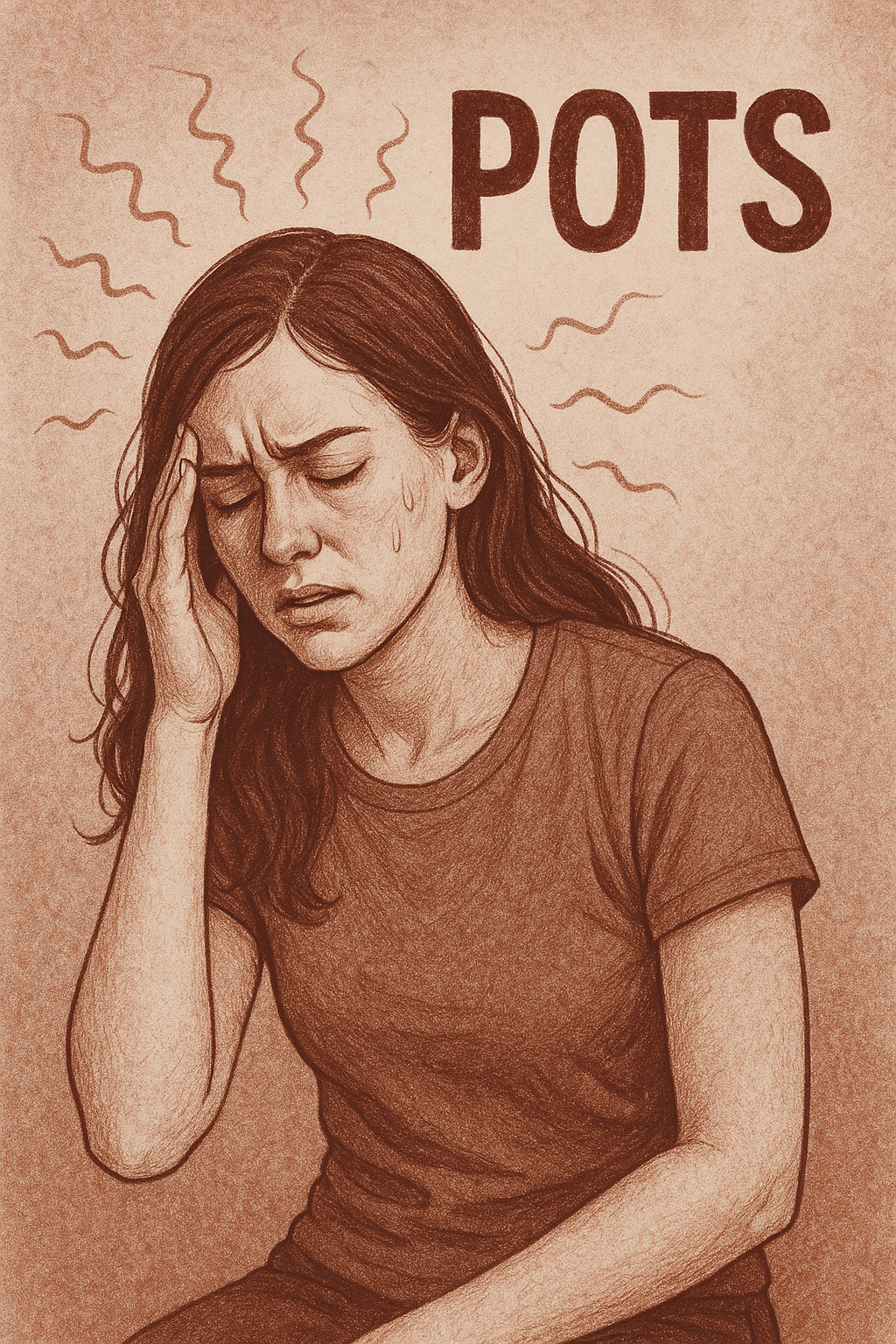At askdoctor.ai, you`ll get valuable knowledge about POTS in young women. If you’re a young woman struggling with unexplained fatigue, dizziness, rapid heartbeats, or feeling faint when you stand up, you’re not alone. More and more young women are being diagnosed with a condition called POTS (Postural Orthostatic Tachycardia Syndrome), yet many still go years without answers.
This article is here to change that.
Whether you’re living with strange symptoms or want to understand what so many others are facing, this is the guide you need. We’re diving into the science, the stories, and the reasons why POTS is becoming impossible to ignore, especially for young women. Knowledge is power. And when it comes to your health, it might just be life-changing.
What is POTS? How does it work for women?
POTS is characterized by a significant rise in heart rate, typically at least 30 beats per minute (bpm) within 10 minutes of standing, without a corresponding drop in blood pressure. This leads to symptoms such as dizziness, fatigue, palpitations, and sometimes fainting. The exact cause of POTS remains unclear, but it often follows events like viral infections, surgery, or prolonged bed rest.
In individuals with POTS, standing up causes blood to pool in the lower extremities, prompting the heart to beat faster to maintain blood flow to the brain. This compensatory mechanism leads to the hallmark symptoms of POTS. The condition can be exacerbated by factors such as dehydration, heat, or prolonged standing.
Research indicates that over 75% of POTS patients are women, with many experiencing symptoms on set during adolescence or early adulthood. Hormonal fluctuations, particularly those related to the menstrual cycle, pregnancy, or menopause, may contribute to this gender disparity. Additionally, women with POTS often report more severe symptoms during hormonal changes.
Symptoms of POTS
- Dizziness or lightheadedness when standing
- Rapid heartbeat (tachycardia)
- Fatigue and brain fog
- Nausea or digestive issues
- Cold hands and feet
- Exercise intolerance
- Anxiety-like symptoms
- Fainting (in more severe cases)
These symptoms can vary day to day and can be triggered by heat, dehydration, stress, illness, or even standing in line for too long.
Why Is POTS So Common in Young Women?
- Hormonal fluctuations: Estrogen and progesterone levels may influence blood vessel tone and heart rate regulation, making women more vulnerable.
- Puberty and menstruation: Many girls develop POTS symptoms around puberty, and symptoms often worsen during certain phases of the menstrual cycle.
- Autoimmune connection: Women are more likely to develop autoimmune conditions, which are believed to play a role in some POTS cases.
- Post-viral onset: Infections like mononucleosis, Epstein-Barr virus, or COVID-19 can trigger POTS symptoms—women may be more susceptible to post-viral complications.
- Genetic and connective tissue factors: Conditions like Ehlers-Danlos syndrome (more common in females) are linked to POTS.
- Stress and trauma: Physical or emotional trauma, including surgery, injury, or prolonged stress, can trigger dysautonomia, and young women may be more affected due to social and biological stress responses.
- Misdiagnosis delays: Women’s symptoms are more likely to be dismissed as anxiety or stress, leading to delays in proper diagnosis and skewing statistics toward young females who finally get diagnosed after years of unexplained symptoms.
Some women first experience POTS symptoms after pregnancy, surgery, or illness, especially viral infections. In recent years, doctors have also noted a rise in POTS diagnoses following long COVID.
How Is POTS Diagnosed?
Clinical History & Symptoms
- Doctors begin with a detailed medical history and symptom review.
- Common symptoms include lightheadedness, fatigue, palpitations, shakiness, and brain fog upon standing.
- Must be present for ≥6 months (as per criteria from the American Autonomic Society).
Orthostatic Vital Signs Test
- Heart rate and blood pressure are measured lying down and then at intervals after standing.
- Diagnostic criterion: an increase in heart rate of ≥30 bpm within 10 minutes of standing (≥40 bpm for those aged 12–19), without a significant drop in blood pressure.
Tilt Table Test
- A standardized test is used in many autonomic clinics.
- Patient is strapped to a motorized table tilted from lying to standing position while HR and BP are monitored.
- Confirms excessive HR increase upon tilt, mimicking the postural change.
Exclusion of Other Conditions
- Blood tests may be ordered to rule out anemia, thyroid disorders, dehydration, and adrenal insufficiency.
- ECG or echocardiogram may be used to rule out structural heart problems.
24-hour Holter Monitor or Event Recorder
- Sometimes used to capture abnormal heart rhythms and correlate them with symptoms.
Additional Autonomic Testing
- Some centers may also perform QSART (Quantitative Sudomotor Axon Reflex Test) or the Valsalva maneuver to assess broader autonomic function.

Treatment of POTS in Women
(based on current guidelines and peer-reviewed research)
Lifestyle & Non-Pharmacological Measures (First-Line)
- Increased Salt & Fluid Intake
- 2–3 liters of water and 3–10 grams of salt per day are recommended.
- Helps expand blood volume and improve blood pressure regulation.
- Backed by studies like Raj SR (2013) and the AAS consensus.
- 2–3 liters of water and 3–10 grams of salt per day are recommended.
- Compression Garments
- Waist-high compression stockings or abdominal binders reduce blood pooling in the lower body.
- Often recommended, especially in the morning or during long standing.
- Waist-high compression stockings or abdominal binders reduce blood pooling in the lower body.
- Physical Reconditioning
- Recumbent or semi-recumbent exercise (e.g., rowing, cycling) improves autonomic control.
- Gradual aerobic training has been shown to reduce symptoms (Fu et al., 2010; Levine et al., 2015).
- Recumbent or semi-recumbent exercise (e.g., rowing, cycling) improves autonomic control.
- Sleeping with the Head of Bed Elevated
- A 4–6 inch elevation can help with overnight blood volume regulation.
- Especially useful for women with coexisting low blood pressure.
- A 4–6 inch elevation can help with overnight blood volume regulation.
Pharmacological Options (Used When Lifestyle Alone Isn’t Enough)
- Beta-Blockers (e.g., propranolol, atenolol)
- Low-dose beta blockers can reduce heart rate and improve symptoms.
- It is effective in many women, especially during high-symptom phases.
- Low-dose beta blockers can reduce heart rate and improve symptoms.
- Ivabradine
- Selectively reduces heart rate without lowering blood pressure.
- Studied in female POTS patients with positive results.(Barboi et al., 2021).
- Selectively reduces heart rate without lowering blood pressure.
- Midodrine
- An alpha-agonist that increases vascular tone; useful in patients with hypotension or blood pooling.
- Taken during the day to improve upright tolerance.
- An alpha-agonist that increases vascular tone; useful in patients with hypotension or blood pooling.
- Fludrocortisone
- Helps retain sodium and expand blood volume.
- Often combined with salt/fluid loading.
- Helps retain sodium and expand blood volume.
It is important to use these medications after your doctor allows.
Hormonal Considerations in Women
- Menstrual Cycle Fluctuations
- Many women report worsening of POTS symptoms during the luteal phase or menstruation.
- Hormonal shifts (progesterone/estrogen) can affect vascular tone and blood volume.
- Many women report worsening of POTS symptoms during the luteal phase or menstruation.
- Estrogen’s Role
- Research suggests estrogen may have protective effects on the autonomic nervous system.
- Hormonal birth control may help some women but worsen symptoms in others—it should be carefully trialed.
- Research suggests estrogen may have protective effects on the autonomic nervous system.
Mental Health & Quality of Life
- Addressing Anxiety, Depression, and Brain Fog
- Many women with POTS report comorbid anxiety or mood symptoms.
- CBT, mindfulness, and neurocognitive therapy can be part of comprehensive care.
- SSRIs/SNRIs are sometimes used, but must be balanced with cardiovascular effects.
- Many women with POTS report comorbid anxiety or mood symptoms.
Treatment
Inspiring Journeys of Anxiety Recovery (Symptoms, Causes, Treatment, and Success Stories)
Managing Depression: (Symptoms, Causes, Diagnosis, Treatment, and Real Stories of Recovery)
Brain Fog Vs. Cognitive Decline: (Symptoms, Causes, Diagnosis, Treatment, and Success Stories of Recovery)
Living With POTS
Living with POTS isn’t easy, but it is manageable. Many young women go on to live full, active lives with the right combination of treatment, support, and pacing. Joining support groups, finding a knowledgeable doctor, and listening to your body are key.
Remember, you’re not lazy. You’re not dramatic. And you’re not alone.
Final Thoughts:
POTS might be invisible, but it’s very real. If you or someone you know is struggling with strange symptoms that doctors can’t explain, this could be the missing piece of the puzzle. The more we talk about it, the more awareness we raise—and the sooner more people can find answers and relief.
Real-Life Success Stories of POTS
The author shares a hopeful personal journey with POTS (Postural Orthostatic Tachycardia Syndrome), a condition they struggled with since childhood. After worsening symptoms during college, including severe fatigue, tachycardia, and orthostatic hypotension, they were finally diagnosed following a tilt-table test and extensive evaluations.
Through lifestyle changes like increased salt intake, compression gear, regular exercise, and cutting out caffeine, they gradually regained control over their symptoms. Despite the challenges of managing POTS while studying and working, they successfully improved their quality of life and are now a first-year medical student.
Their message to others: Don’t lose hope. Recovery and a fulfilling life with POTS is possible.
Kiki overcome POTS: Success story
Vanesa`s Recovery from POTS after 10 Years
Reference
Harvard Health on POTS
AHA Journals on POTS
Have you or someone you love experienced symptoms of POTS?
What was your journey to getting a diagnosis like? Share your story in the comments.






Leave a Reply